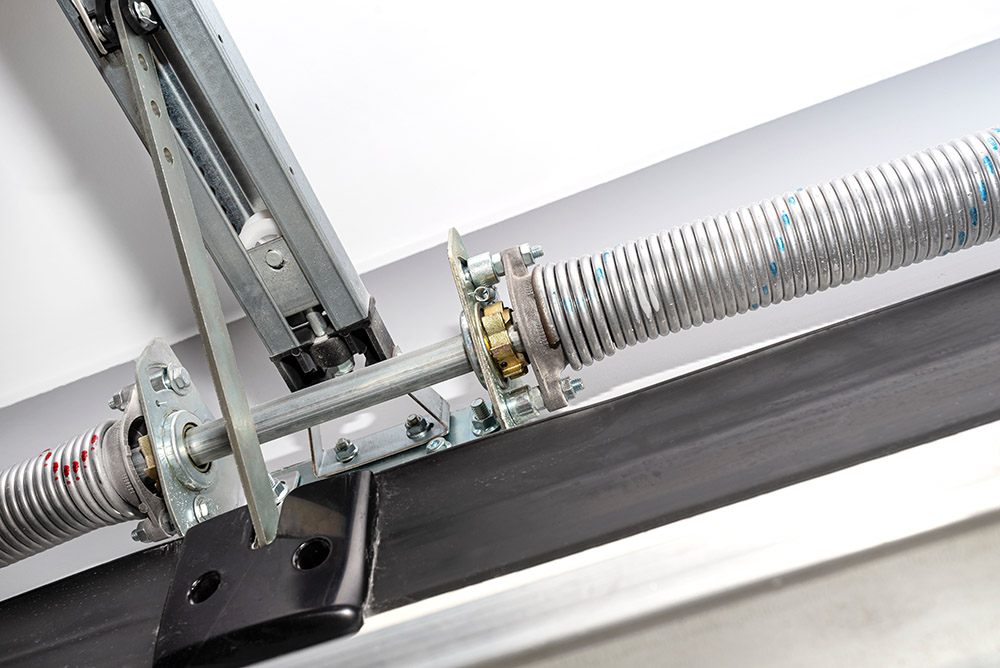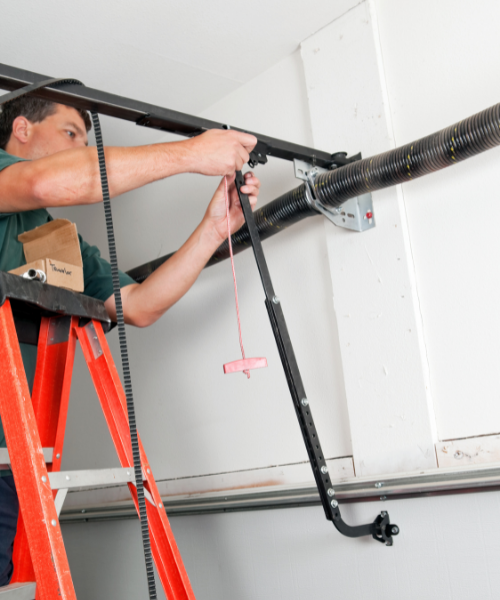Understanding the Importance of Maintenance
Regular maintenance is a crucial aspect of ensuring the longevity and safety of your springs. Neglecting spring maintenance can lead to a shortened lifespan and even potential safety hazards. Springs that are not properly maintained may begin to wear down, lose their tension, or become unbalanced. These issues can result in a loss of functionality and decrease the overall performance of your springs. Furthermore, neglected springs have a higher risk of breaking or malfunctioning, which can be not only costly to repair but also pose a safety risk to individuals in their vicinity.
By implementing a regular maintenance routine for your springs, you can mitigate these risks and extend their lifespan. Regular inspections and maintenance checks allow you to identify any signs of wear and tear, such as rust, cracks, or deformations. Addressing these issues as soon as they are detected can prevent further deterioration and potential safety hazards.
Additionally, lubricating the springs is essential for ensuring smooth performance and reducing friction, which can accelerate wear and tear. Cleaning and removing debris from the surroundings of the springs is also crucial, as debris can interfere with their proper functioning and cause unnecessary strain. Taking these maintenance steps not only helps to preserve the lifespan of your springs but also promotes safe and reliable operation.
Signs of Wear and Tear
Regular maintenance is essential to ensuring the longevity and performance of your springs. However, it’s important to recognize the signs of wear and tear that indicate your springs may need maintenance or even replacement. One telltale sign is when your springs start to make unusual noises, such as squeaking or grinding sounds. These noises are often an indication that the springs are becoming worn and may require lubrication or adjustment.
Another sign of wear and tear is a decrease in performance. If you notice that your springs are not providing the same level of support or tension as they used to, it’s a clear indicator that maintenance is required. This could be due to worn-out springs or a loss of tension, both of which can affect the overall functionality of your springs. Additionally, if you notice any visible damage, such as rust, corrosion, or cracks in the springs, it’s crucial to address these issues promptly to avoid further damage or safety hazards.
Recognizing these signs of wear and tear is important for maintaining the performance and safety of your springs. By addressing maintenance needs early on, you can prevent further damage and potential safety risks. Regular inspections and prompt action can help extend the lifespan of your springs, ensuring they continue to provide optimal performance for years to come. So be proactive in inspecting your springs, and don’t hesitate to take action if you notice any of these telltale signs.
Lubrication for Smooth Performance
Proper lubrication is crucial for maintaining the smooth performance of springs. Lubricants help to reduce friction between the coils, ensuring that the springs can function optimally. By applying lubricant to the springs, you can extend their lifespan and prevent premature wear and tear. Regular lubrication also helps to minimize noise and vibrations, providing a more comfortable and enjoyable experience.
When it comes to lubricating springs, it is important to use the right type of lubricant and apply it properly. Silicone-based lubricants are commonly recommended for their excellent heat resistance and ability to withstand high pressure. Before applying the lubricant, make sure to clean the springs and remove any dirt or debris. Apply a thin layer of lubricant evenly across the coils, taking care not to overdo it. Remember to follow the manufacturer’s guidelines and recommendations for the specific type of spring you are working with. Regular lubrication will keep your springs functioning smoothly and ensure their longevity.
Cleaning and Removing Debris
Debris accumulation can have a significant impact on the performance and lifespan of springs. When debris, such as dirt, dust, or leaves, builds up on springs, it can interfere with their smooth movement and cause friction. This not only affects the overall functionality of the springs but also puts additional strain on them, which could lead to premature wear and tear. It is important, therefore, to regularly clean and remove debris from your springs to maintain their optimal performance and prolong their lifespan.
To effectively clean and maintain a debris-free environment for your springs, there are a few key tips to keep in mind. Firstly, inspect the area around the springs regularly and remove any visible debris. This can be done using a brush or a vacuum cleaner with a soft brush attachment to ensure thorough cleaning without damaging the springs. Additionally, consider implementing preventive measures, such as installing mesh or covers around the springs, to minimize the accumulation of debris. Lastly, it is crucial to perform routine maintenance, including cleaning, to keep the environment around the springs clean and free from debris. By following these tips, you can ensure that your springs are in optimal condition and avoid potential issues caused by debris accumulation.
Overall, keeping springs free from debris is a vital aspect of maintenance. Regular cleaning and removal of debris not only enhance the performance and longevity of springs but also help prevent potential safety hazards. By understanding the impact of debris on spring performance and applying effective cleaning techniques, you can ensure that your springs continue to function smoothly and efficiently for years to come.
Inspecting for Damage
Regular inspections are crucial for identifying any damages or potential issues with your springs. By conducting these inspections, you can spot early warning signs that may lead to more significant problems down the line. When inspecting your springs, start by looking for any visible signs of wear and tear. This may include fraying or rusting of the springs, as well as any dents or deformities. Additionally, check for any loose or missing parts that may affect the overall performance of the springs. These could include bolts, brackets, or other components that hold the springs in place. By conducting thorough inspections, you can catch any damages early on and take the necessary steps to prevent further complications in the future.
In addition to visual inspections, it is also important to consider the performance of your springs. Test the springs by applying pressure or weight to see if they respond as expected. If you notice any inconsistencies, such as uneven tension or a lack of rebound, this could indicate a problem with the springs. Additionally, be on the lookout for any strange noises or vibrations during operation. These could be signs of internal damage or misalignment. By being diligent with your inspections and taking note of any abnormal behaviors, you can address issues promptly and ensure the optimal functioning of your springs.
Adjusting Tension and Balance
Spring maintenance is essential to ensuring their optimal performance. Over time, springs can become loose or unevenly tensioned, which can affect their functionality and lifespan. To prevent these issues and promote smooth operation, regular adjustments are necessary.
One important tip for adjusting tension and balance is to use the appropriate tools and techniques. A spring tension gauge can help you accurately measure the tension and ensure it meets the manufacturer’s specifications. Additionally, it’s crucial to adjust the tension evenly on both sides of the spring to maintain balance. This will prevent one side from bearing excessive load, which could lead to premature wear and potential safety hazards.
Another crucial aspect of maintaining proper tension and balance is knowing when to seek professional assistance. While minor adjustments can be made by homeowners, complex adjustments may require the expertise of a trained technician. They have the knowledge and experience to ensure precise adjustments and identify any underlying issues that may affect the performance of your springs.
By adjusting the tension and balance of your springs, you can enhance their longevity and performance. Regular maintenance in this aspect will minimize stress on the springs, preventing premature wear and tear. So, whether it’s a garage door spring or a suspension spring, don’t overlook the importance of keeping them properly tensioned and balanced for their optimal functioning.
Protecting Springs from the Elements
Exposure to harsh weather conditions can have a significant impact on the lifespan of springs. Whether it’s extreme heat, freezing temperatures, or heavy rain, these elements can cause the springs to deteriorate more quickly than usual. The constant expansion and contraction from temperature fluctuations can weaken the metal, leading to potential failure and shortened lifespan. Additionally, moisture from rain or snow can cause rust and corrosion, further compromising the integrity of the springs.
To protect springs from the elements and extend their lifespan, there are a few preventative measures that can be taken. One effective way is to use a protective coating on the springs. This can be in the form of a specialized paint or a rust inhibitor that creates a barrier between the metal and the elements. Regularly applying this coating will help safeguard against rust and corrosion. Another measure is to provide adequate shelter for the springs, such as using a cover or enclosure to shield them from direct exposure. This can be particularly important in areas with extreme weather conditions. Remember, taking these proactive steps can help ensure the longevity and optimal performance of your springs.

Source: Shutterstock
Extending Spring Life with Regular Checks
Spring maintenance is crucial for the smooth functioning of various equipment and machinery. Implementing a routine maintenance schedule not only ensures a prolonged spring life but also helps in identifying potential problems before they escalate into major issues. Regular checks provide an opportunity to catch signs of wear and tear early on, allowing for timely repairs or replacements.
One of the key benefits of a routine maintenance schedule is the ability to identify any weaknesses or damage in the springs. This is particularly important as springs can be subjected to significant stress and pressure, which may lead to degradation over time. By conducting regular inspections, professionals can spot signs of wear, such as fractures, corrosion, or loss of tension, and take appropriate measures to rectify the problems.
Catching these issues early can prevent further damage and potential safety hazards, ultimately prolonging the life of the springs and ensuring continued performance. When you give Same Day Garage Door Repair a call, you’re not just addressing immediate concerns; you’re investing in the long-term health and functionality of your garage door system. Our skilled technicians are equipped to assess, diagnose, and remedy any spring-related issues, providing you with peace of mind and a garage door that operates smoothly and efficiently.

